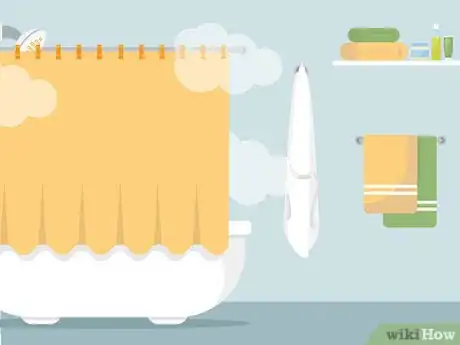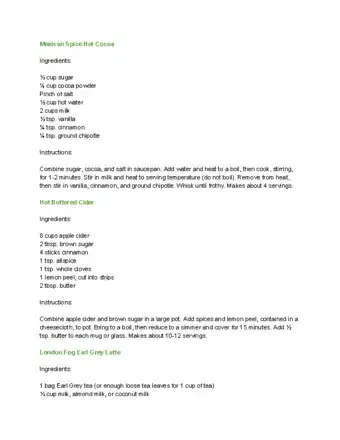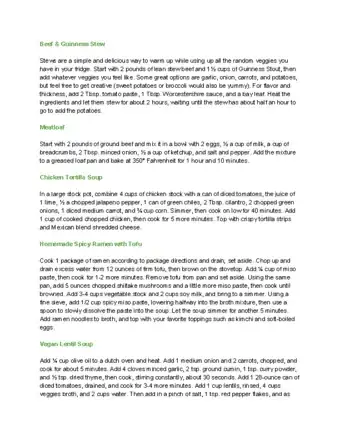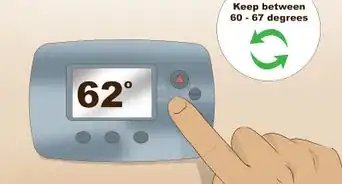This article was co-authored by Cassandra Sethi. Cassandra Sethi is a Personal Stylist, Image Consultant, and the Founder of Next Level Wardrobe, a luxury personal styling service for busy professionals. With over 20 years of fashion industry experience, Cassandra helps people transform their confidence by creating a work wardrobe they love to wear. Cassandra holds a BA in Fashion Merchandising from California State University, Long Beach, and a Postgraduate Certificate in Fashion Buying and Merchandising from the London College of Fashion. She created Soulcycle's retail business and was the Senior Buyer for 90+ Equinox gyms. Cassandra has been featured on New York’s PIX11 in an interview about how to achieve great work-from-home style as well as in Men's Health, Business of Fashion, and NYMag.
There are 9 references cited in this article, which can be found at the bottom of the page.
wikiHow marks an article as reader-approved once it receives enough positive feedback. This article received 11 testimonials and 100% of readers who voted found it helpful, earning it our reader-approved status.
This article has been viewed 885,934 times.
Brrr! When the winter temperatures dip low, living and working in a sub-zero climate can really take its toll. By employing a few tricks, however, you can stay warm despite the cold weather.
Steps
Staying Warm Outside
-
1Wear an under-layer. This is an easy way to stay warmer without having to do much. An under-layer is a layer of clothing which goes under your normal clothing. A common form of underwear are thermals. This under-layer can take many forms, but each can help you stay warm without adding a lot of bulk or extra steps.[1]
- Common under-layer items include stockings, leggings, thermal shirts, and long underwear.
- It’s important to keep in mind that having this under-layer can become uncomfortable if you are in a warm room. For example, if you bundle up to drive to work in a warm office, you may find the additional base layer too much.
- After skiing, you may have to strip down to your thermals when sitting in front of the fireplace in your alpine cabin. If opaque, this is generally considered appropriate apres-ski wear.
-
2Wear a waterproof outer layer. When you know there will be chances to get wet, it’s important to have a waterproof layer to stay warm. If the water penetrates through your clothing, your clothing will only make you colder. Examples of watery conditions you might encounter include rain, snow, and spray (such as if you will be out on a boat or if there are lots of puddles on the ground).[2]
- You can throw a rain jacket on under a warm but less waterproof coat, for example. When you buy coats, look for materials that are very waterproof and warm, such as neoprene.
Advertisement -
3Wear a heat-retaining layer. Aside from just keeping dry, you want to look for clothing made out of materials that are very insulating. You’ve probably heard about fleece but this fabric is not for everyone. Find out what other options are available to you and then go on a shopping trip.[3]
- Wear wool, if you can. This is one of the best insulating materials, even though it can be expensive. You can also use wool clothes, instead of just wool coats, to cut down on how much you need to wear total. Many inexpensive wool items can be found at vintage stores.
- Other warm materials include down, lined leather, fur, and neoprene.
- Wool will continue to keep you warm, even if wet. This is not true of most other materials such as leather or quilted cotton.
-
4Protect your extremities. It’s not completely true that you lose X percentage of heat from your head or your feet or whatever. However, it is true that leaving these areas uncovered can make it tough for you to stay warm. When you’re outside, try to keep your head, hands and feet covered with a scarf, hat, gloves, thick fuzzy socks and boots. You may also wear two layers of socks or leggings/thermals under your jeans. It may not make you look like the pinnacle of fashion, but you will be warm.[4]
- It is very important for all of these items to be waterproof, since these are the areas where you are most likely to notice wetness and additional cold. For example, use lined leather gloves if you can.
-
5Protect yourself from the elements. When you're forced to go outside, stay as far away as you can from things like rain, snow, puddles, ice and wind. These things getting too close are what make you feel cold; your clothing and body can usually handle the air temperature. Move quickly between buildings, use a car when you can, and when you must be outside, try to walk under a shelter.
-
6Bring warming materials. You can carry around little heat sources with you, if you find yourself struggling to stay warm. Small items, like reusable hand warmers, can be put in a pocket to get the job done when gloves just aren’t enough. Other items, like travel mugs full of soup, can be used to warm you from the inside out.[5]
- You can even make your own hand warmers if you can’t find anywhere to buy them for a good price. There are many websites with instructions and all are easy to make with the right materials.
EXPERT TIPSteve Masley has been designing and maintaining organic vegetable gardens in the San Francisco Bay Area for over 30 years. He is an Organic Gardening Consultant and Founder of Grow-It-Organically, a website that teaches clients and students the ins and outs of organic vegetable gardening. In 2007 and 2008, Steve taught the Local Sustainable Agriculture Field Practicum at Stanford University.Home & Garden Specialist
 Steve Masley
Steve Masley
Home & Garden SpecialistUse a thermos to keep liquids warm for longer. Pat Browne and Steve Masley, the owners of Grow it Organically, spend long days working outside on gardens, and they've found creative ways to stay warm. Steve says: "In the morning before we head out, I fill a big thermos with hot coffee, and I wrap it in boot socks. Then when I pull it out, it's just the right temperature to drink, so I don't have to stop at a cafe or something just to get a cup of coffee."
-
7Wear clothing that is the right size. We know you want to look hot, but there’s a reason why Eskimos wear those big coats and loose pants. When your clothing fits tightly, it can’t keep you warm or comfortable. Instead, if you want to stay warm, make sure the clothes that you’re wearing fit loosely. This creates a protective layer of warm air between your skin and the environment on the other side of that fabric.[6]
-
8Move around to create heat. If your clothes themselves can’t keep you warm, let your body create heat. Moving around will burn energy in your body, which gets expelled as heat. Try exercising or at least try not to stand still.[7]
- Jumping jacks are a good option if you're inside. However, when you're outside movement like that can be dangerous because of slippery ground conditions. A better way to get active when you're outside is to do small lunges, which create less chances for slipping.
Staying Warm Inside
-
1Layer your clothing so that you can adjust for different environments. The most basic thing you can do to stay warm both inside and outside is to layer your clothing. Ask anyone who has lived in some of the colder parts of the world, like Alaska and Norway, and they’ll all tell you: wear layers. This lets you have one outfit for the day that adjusts easily for snowy weather outside, as well as switching over naturally to your toasty warm office.[8]
- An example of an outfit would include stockings, jeans, a long sleeve shirt, a button-up shirt, a sweater and a coat. With all or a combination of these things on, you can easily adjust to a roaring hot classroom, an icy office, a neutral grocery store, and the freezing temperatures outside without any problem.
-
2Insulate your home. Make sure your home is as insulated as it can be. You might want to switch out the insulation in your walls or ceiling. You can also do more basic things, like putting up thick curtains and blankets over windows.[9]
- Cellular shades are actually pretty effective at keeping cold air from escaping from a window and they're often cheaper than other curtain options.
- You can also further insulate windows and any glass doors with an insulating film, a plastic material that is clear and adheres to all kinds of glass.
-
3Close off unused rooms and focus on heating a central room. It is often easier and cheaper to focus on keeping one room warm than on keeping an entire apartment or house warm. Figure out a single room that your family can stick to during waking hours and seal it off from the rest of the house. Close the doors and keep them covered in blankets. Centralize your heaters and other applications to warm the room. This saves you from having to put a lot of effort in keeping rooms warm that you won't use very often.
-
4Seal gaps that let in cold air. You'll want to keep an eye out for holes and gaps that will let cold air into your home or between rooms that have different levels of insulation. The most common example is the gap under doors, but you may also find that some windows let in a draft or that rooms above a basement have cold air coming up through the floor.[10]
- Rolled up blankets and carpets can easily be used to plug these gaps.
-
5Prepare your bed. You'll probably want your bed to be warm before you crawl in to sleep. Those icy sheets are no one's friend. There are lots of ways that you can get your bed ready before it's time to sleep. Try:
- A hot water bottle, placed under the blanket at the lower center of the bed, or run your blanket through the dryer for 10-20 minutes on medium or high heat.
-
6Bake cookies. Or anything, really. Your oven, when it's turned on and heated up to the usual baking temperature of around 365 degrees, can work really well to make the room that it's in nice and warm. Make the kitchen your weekend base of operations and hang out while cookies or a dinner roast is prepared.
- Doing your laundry can similarly heat up nearby rooms. Make your chores count and be quick to do your laundry on really cold days. You can wear items fresh out of the dryer to get even warmer.
-
7Drink something hot. Whether it's a hot cup of lemon tea or a Mexican coffee, drinking a hot liquid can boost how warm you feel from the inside out. Turn the kettle on and break out the mugs because you're about to get nice and warm.
- You might think or have been told that adding alcohol to a hot drink will make you feel warmer, but that's not really the best advice. Alcohol actually lowers your body temperature, even though it gives you that "burning" feeling. If it's dangerously cold in your home, you should avoid alcohol.[11]
-
8Take a hot shower or bath. A hot shower or bath can just be enough to get your body back to a reasonable level of warmth. Find yourself just getting cold again after five minutes? Make sure you're bundled up as soon as you get out, with warm clothes, a robe, and house shoes. This will help your body retain the heat of the bath.[12]
Food and Drink Ideas
Warnings
- Consult your doctor before you spend any extended period of time outside, especially if you have any kind of illness.⧼thumbs_response⧽
- Spending too much time outside in the cold can result in a nasty cold, or something even worse. Take good care of yourself.⧼thumbs_response⧽
Things You'll Need
- Winter Coat (wool or fleece)
- Boots(insulated)
- Foot warmers
- Hand warmers
- Gloves
- Good-grip shoes
- Layers of clothes
- Full-length zip on fleece leg warmers
- Fur ear warmer
- Ice cap
- Lots of blankets to stay warm and snuggly!
References
- ↑ https://www.bhf.org.uk/informationsupport/heart-matters-magazine/medical/beat-the-cold/keeping-warm
- ↑ https://www.mayoclinic.org/healthy-lifestyle/fitness/in-depth/fitness/art-20045626
- ↑ http://cssf.usc.edu/History/2010/Projects/J1517.pdf
- ↑ https://my.clevelandclinic.org/health/diseases/15439-frostbite
- ↑ https://www.mayoclinic.org/diseases-conditions/frostbite/symptoms-causes/syc-20372656
- ↑ https://www.dhhs.nh.gov/tips/documents/stayingwarm.pdf
- ↑ https://www.bhf.org.uk/informationsupport/heart-matters-magazine/medical/beat-the-cold/keeping-warm
- ↑ https://www.cdc.gov/disasters/winter/duringstorm/indoorsafety.html
- ↑ https://www.cdc.gov/disasters/winter/beforestorm/preparehome.html
About This Article
To stay warm in cold weather, make sure to dress in warm layers, and choose clothing made of synthetic materials, wool, or silk, as these materials trap heat without retaining moisture. If you have them, put on a hat, gloves, and thick socks, as much of your body heat escapes through your head, hands, and feet. You can also try brewing a warm cup of tea or coffee before heading outside, and holding it as you venture into the cold. If you're inside, try taking a hot shower or bath to quickly warm up. Then, when you get out, bundle up with a robe or blanket so the heat doesn't escape. You can also try baking something so your kitchen gets nice and warm, or doing laundry so you have fresh, warm clothing to wear! For tips on staying warm inside the house during cold weather, read on!













































































